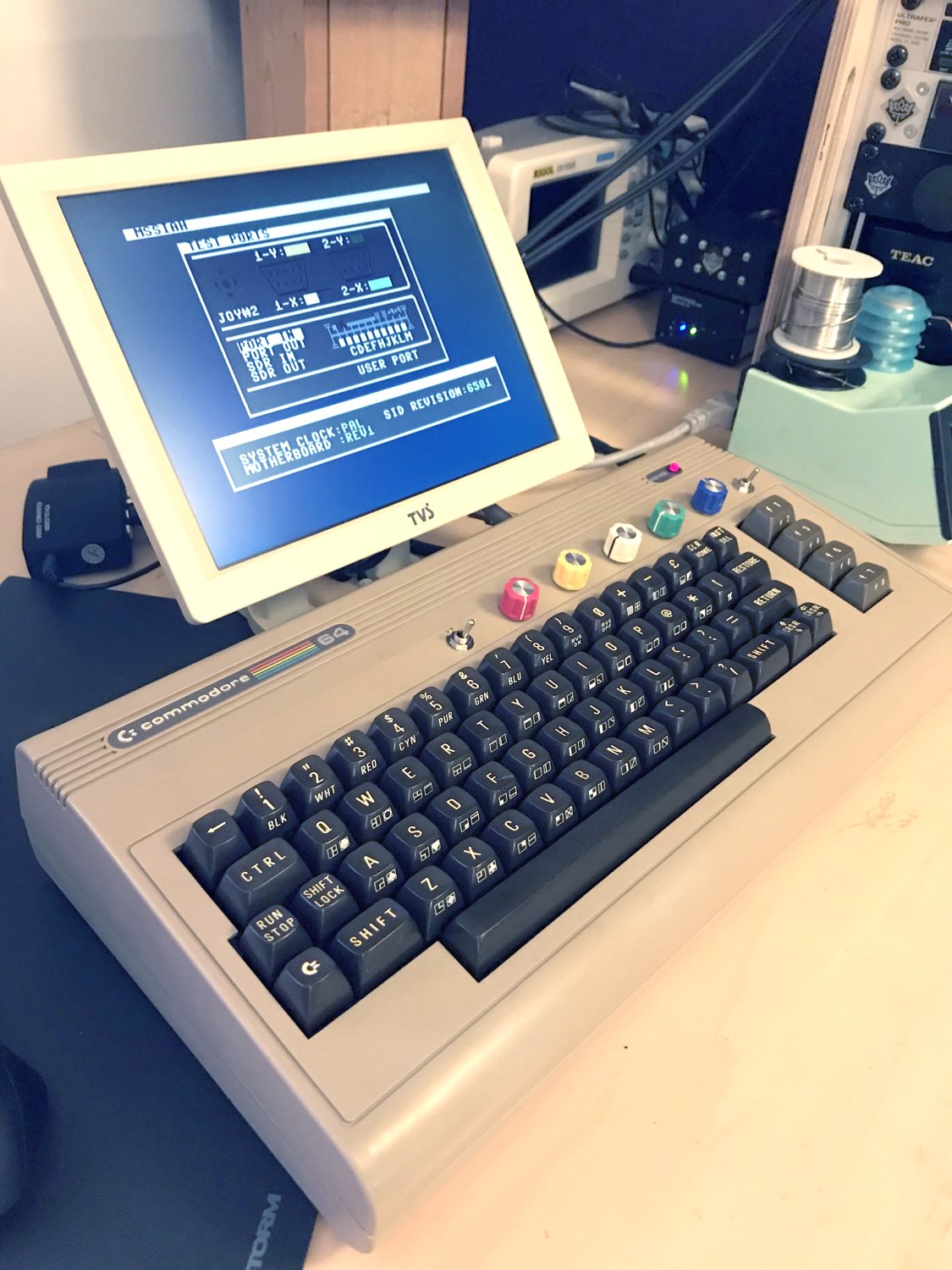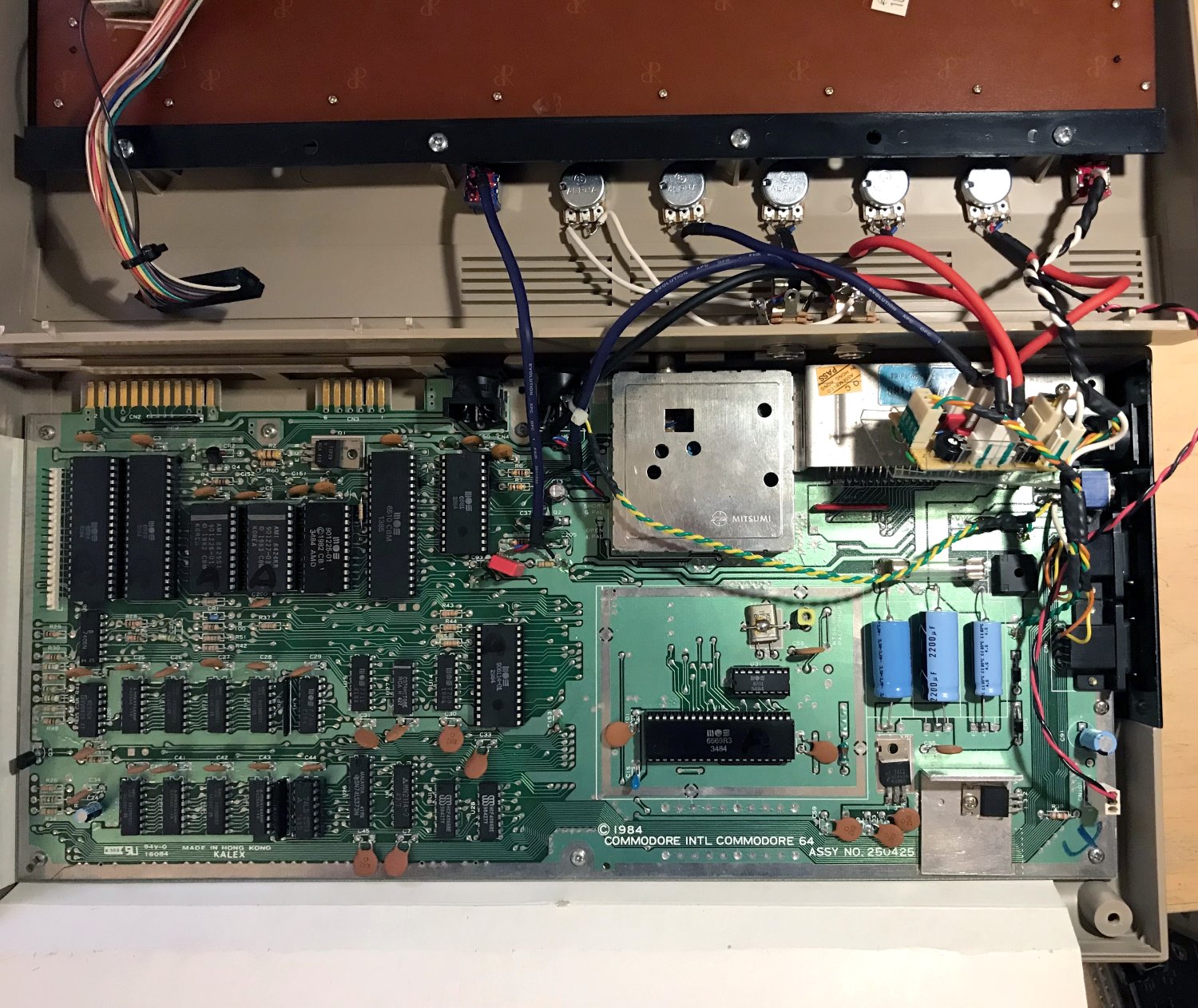I did an experiment and it paid off. The SID audio chip ground is shared with everything. There's no ground plane - just a complete non-hierarchical mess of two-layer PCB board ground. The audio is as noisy as you can imagine. Video chroma/luma conversion crap leaks into it with a mess of 50hz and its multipliers. Looking at the overall design this was of course not a concern for a cheap consumer computer. Good enough they probably said.
But it can be fixed on the cheap.
1. Disconnect all the SID 5VDC, 12VDC and ground ie. cut all those traces. Share absolutely nothing with the system.
2. Steal the systems unregulated ~20VDC into two additional regulator stages dedicated just for the SID. First drop it to 12VDC (audio), then further to 5VDC (control). It's only like 100mA total, no heatsinks required. I used LM317 and a jung regulator I had laying around, but any standard regulator works of course.
3. Connect these to the now floating and trace-cut SID. Make sure the only ground that gets to SID is the one coming from the dedicated regulators.
Now it's studio proof and modern without noise.
[edit]
Technically that's not correct. It's without external noise. SID is pretty clumsy so its internal world can still be heard. Its envelopes are not even close to 100% kill and internal control data still is heard. But this is a feature. All that clumsiness and "spice" is why one would ever use SID in 2018.




